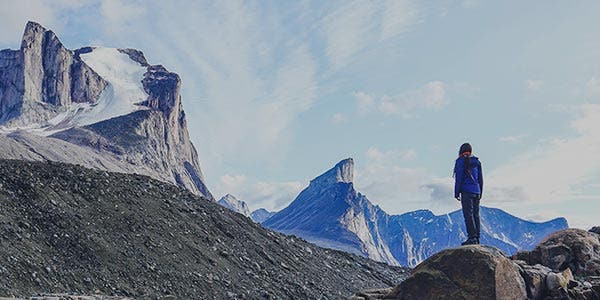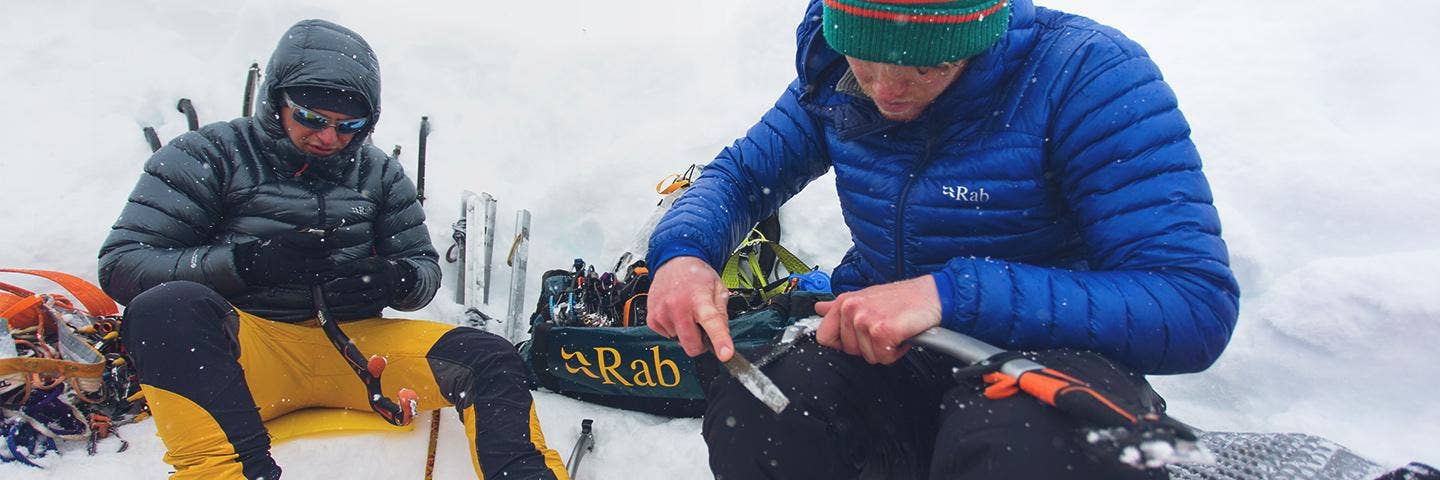
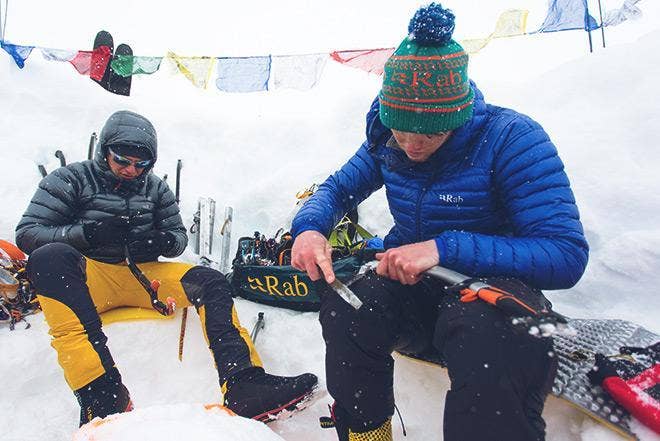
“This isn't the forest or even the snow, there are no rocks, no trails or footprints, no plants or flowers- this is ice. And guess what: it changes every single day.”
It was a summer of record-breaking temperatures and unprecedented blue skies in Alaska, though my life on ice rendered itself in stark contrast. Bundled head to toe in a down jacket and puffy pants, I sat outside the tent, each day, on the leeward side (it’s always windy!), and took in the gift of living on hard ice. However, I was alone, so I wondered often how to share about what life was like here. How do we record the experiences we have? Can it be writing? Or a photo? Maybe it’s word-of-mouth stories told over a campfire or at holiday gatherings. Some experiences, however, seem too illustrious, perhaps too pure to fully express. Nonetheless, we must try, for stories are an age-old method for culturing mankind and we have an obligation to let our experiences better the whole. It is our stories, each from individual perspectives, that combined paint what we know about the world and how we perceive certain environments.
This story is about my experiences living on the Spencer Glacier in the Chugach Mountains of Alaska. I lived alone on the glacier for over five weeks total, in one or two week stints, guiding climbing and exploration for Ascending Path. Hard glacial ice is an otherworldly environment and living in this place is unlike any other. This isn't the forest or even the snow, there are no rocks, no trails or footprints, no plants or flowers- this is ice. And guess what: it changes every single day.
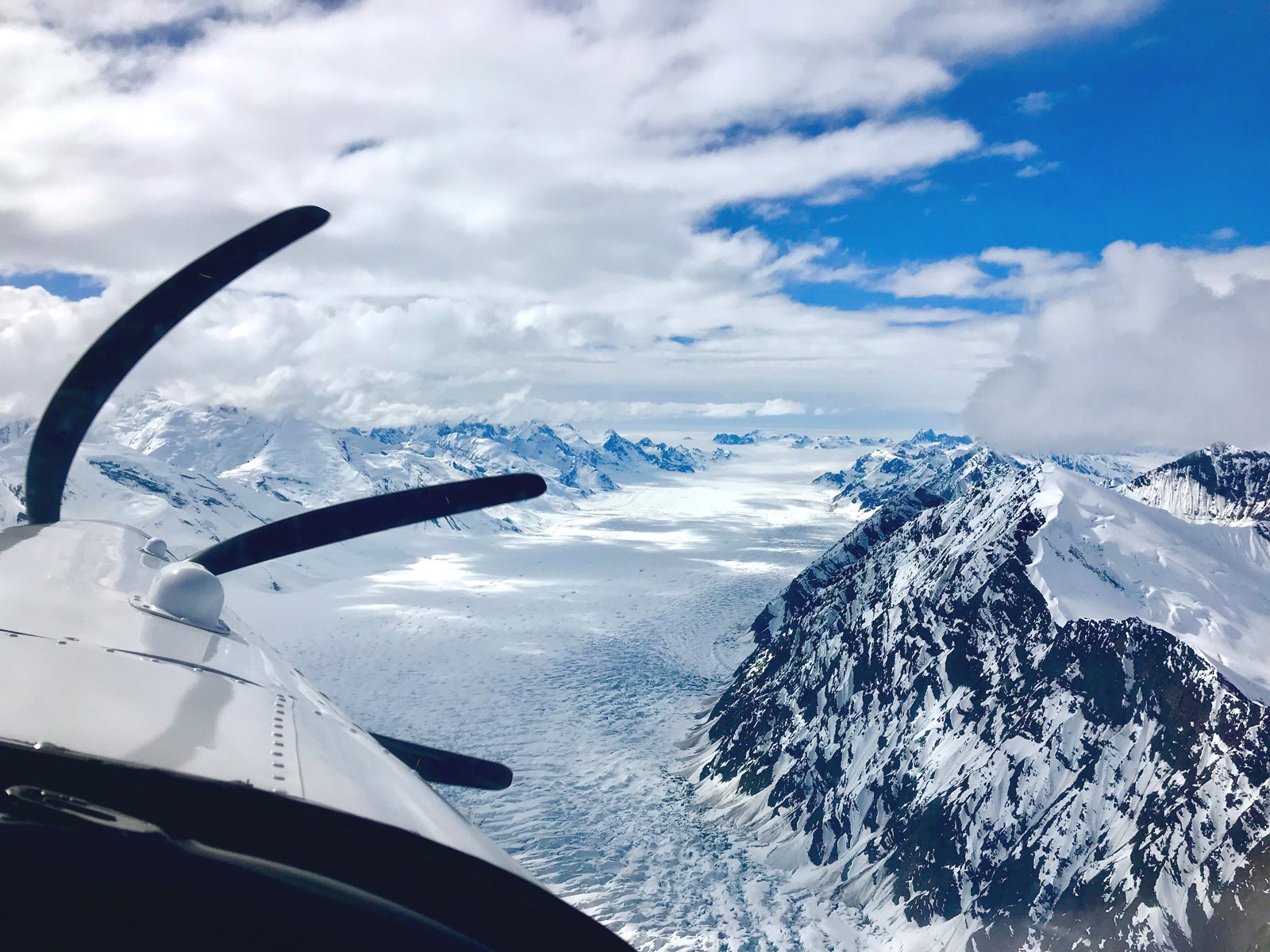

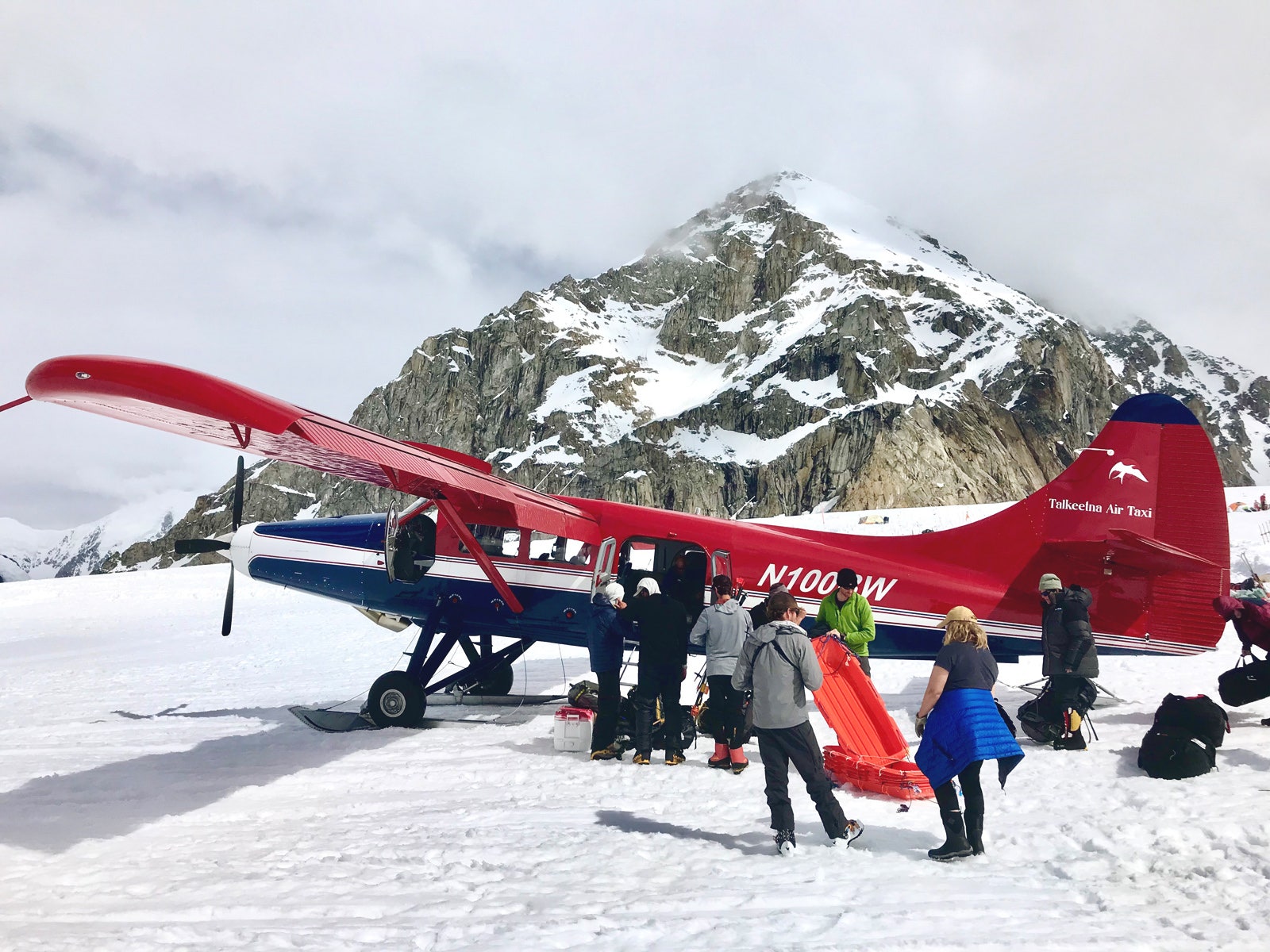

The why?
Our guided ice program switched to helicopter access only this spring due to the glacier’s continued retreat. The company opted to test a new logistics approach, possibly the first time it’s been done in the glacier guiding industry, though it would be tough to say for sure. If a guide is living on the ice- that’s an extra seat in the helicopter that can be used for another guest. This proves to be beneficial for both the company (who can offer more spots per day) and the guests as it makes the flight cheaper per person and if in bigger groups, or those trying to book on a busier day- the extra spots work to customer advantage. My time running the Ice program and living in a camp two and a half kilometers up the glacier from the terminal face, became an array of memories cultivated throughout every hour of every day and ultimately culminating in a summer to be remembered.
Flying Out
On June 2nd I flew up to “Ice world” with two duffels- one full of food and one of gear. The food stash was stout, containing an array of veggies, canned goods, eggs, instant mashed potatoes, ramen, a big box of pancake mix, and of course plenty of snacks. The other duffel had all the gear - a variety of Rab kit from the Alpha Flux Jacket to the Torque Softshell Pants to the Neutrino Down Parka. Gloves ranging from leader to midweight including the Velocity glove and Guide Glove and of course my trusted Mythic 600 Down sleeping bag. Geared up for fourteen days, I caught a ride through the mountains to Ice camp. Stepping out of the helicopter, mountain boots on glacial Ice, the footing was actually quite good as the sun had baked the surface soft and a cool wind rattled my jackets and cut across my face. Despite constant sunlight, a continuous wind called a Katabatic ripped down the glacier and with it the chilled air of the ice. The wind peaks at midday when the sun is strongest and it’s slower pace was found in the middle of the night. Tagging out one of my counterparts, Matt Wentzell, who had just finished 8 days on the ice, I stepped into the wind-battered tent that echoed its battle with the cold air. I settled in, then strapped on my crampons, and went for a hike around the area.
Over the next two weeks, I lived in relative solitude, with trips coming in for just 3 or 4 hours at a time and living alone for 20 to 21 hours a day, or sometimes whole days in a row. This time becomes sacred and all the moments alone in Ice world directly contribute to a new version of yourself. Living and working here by yourself proves to challenge your character and through a will and stoke to adapt to this strange environment, comes the ability to overcome obstacles and factors that are both physically and mentally challenging. A variety of little things, like needing to put on crampons/microspikes just to step out of the tent, managing awkward uneven surfaces for chairs and tables, and consistently upkeeping tent anchors, gradually wear on the mind and it’s a strength to do the job well that has you completing your tasks, despite how tedious they may be.
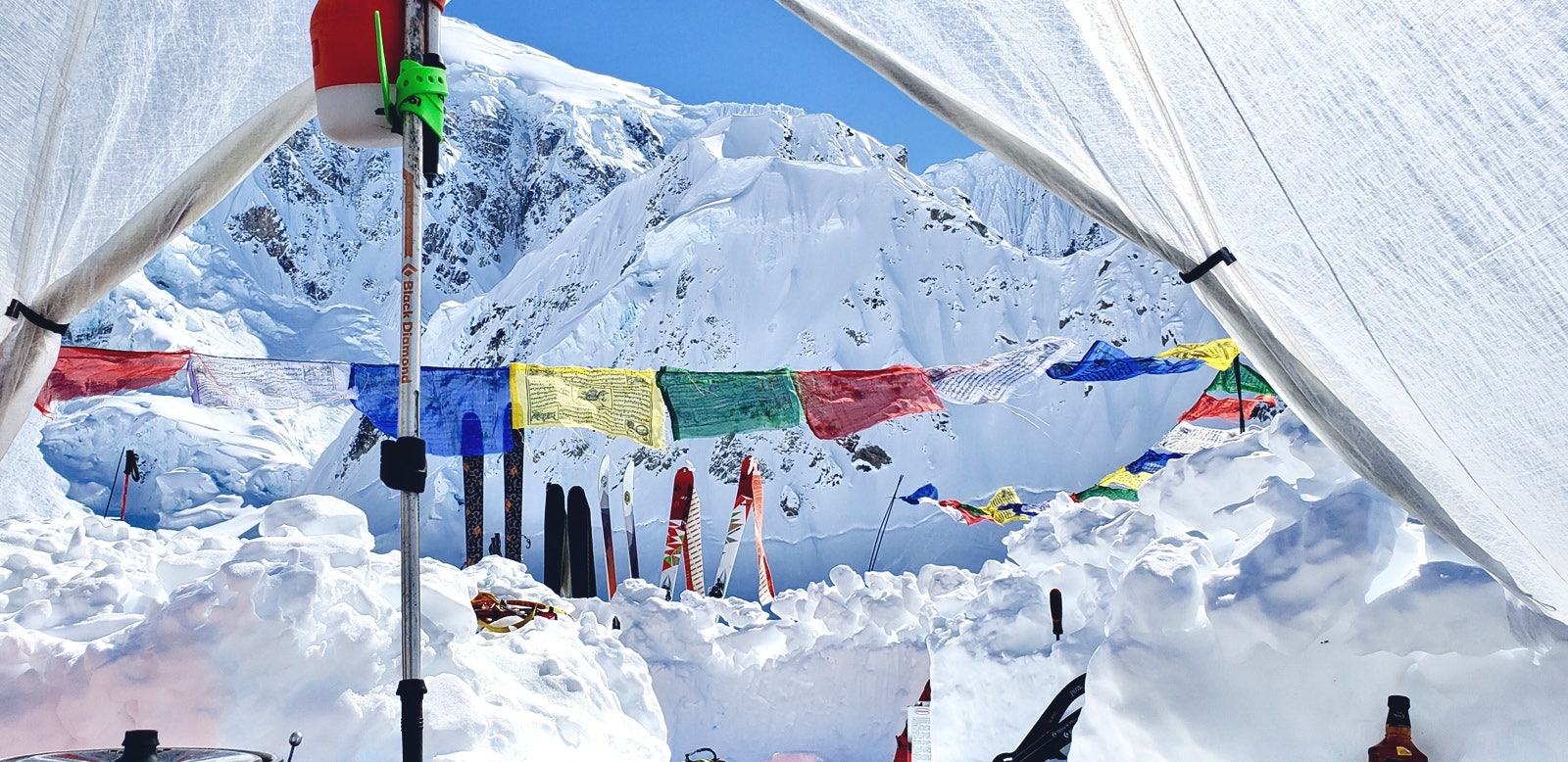

Finding the balance
In the ice world, consider yourself on a solo expedition. As expedition climbers know, certain things come as mandatory, one above them all: you must take care of your physical well being. This is a principle of several components. The most obvious of course, is the reality you are on a glacier- surrounded by its seemingly endless crevasses, it's massive abyss-like vertical melt tubes (known as moulins), small holes and divots endangering ankles, the technical terrain that requires sound footwork and ice tools, and like any good Alaskan wilderness environment: Bears!
Finding the balance of exploring this terrain in your free time, understanding it well for your guiding, and keeping yourself out of trouble is something you learn quickly. Like all expeditions, our diet and hydration become key factors that will greatly impact our physical and mental output. There is no one here to hold us accountable for eating right, drinking enough, or helping share the load of preparing food and cleaning cookware. This is something you must do for yourself. And last but not least- maintaining physical fitness. As an ice climber, this environment is a perfect summer get-away and often I would find a vertical wall near the camp to do pull-ups on and work on moving up and down on my tools. If it rains for a week while you're alone in an ice world you will sit in the tent most of each day and you must find ways to exercise. For me this meant pushups, situps, focusing on good posture, and then mustering up the courage to go out hiking around the ice in the rain for a while. One of our guides used to bring running shoes with microspikes to strap over and would go for short runs in the flat area around camp. Opinion: Running on ice- not advised!
The Camp
So, how do you camp on hard ice for a summer? With a constant wind, a daily surface melt of 10 to 20 cm, and the glacier slowly sliding downhill- it’s a tough life for a tent and its upkeep is vital. With the glacier in a constant melt from sunlight, the tent protects the ice under it and thus melts very slowly. Unfortunately for residents of Ice world, this means after 4 days the tent may be on a platform up to 80cm off the surrounding ice. One of the constant projects is using our one-meter drill to make industrial-strength V-threads (Abalakovs) to anchor the tent. Using a trekking pole with a metal hook on the end, we pull the webbing through and tension hitch it to the tent. These anchors become a point of pride amongst guides as you want to be the one making the deepest V-threads because they'll last the longest.
This is imperative or the tent is at a very real risk of being picked up and moved by the wind. These are just some of the many trivial pieces of living in Ice world that must be negotiated and it has its effects on the whole operation. Going to bed is a wonderful time, snuggling into my Mythic bag on an insulated cot off the ice, reading books, writing, watching some pre-downloaded movies or TV episodes, the comforts in the tent were solid. With a carpeted floor, solar panel, and propane stove, getting comfortable inside was easy. I always slept flawlessly to the noise of the wind and the nearby waterfalls, or the calming sound of a thousand raindrops spattering across the tent.
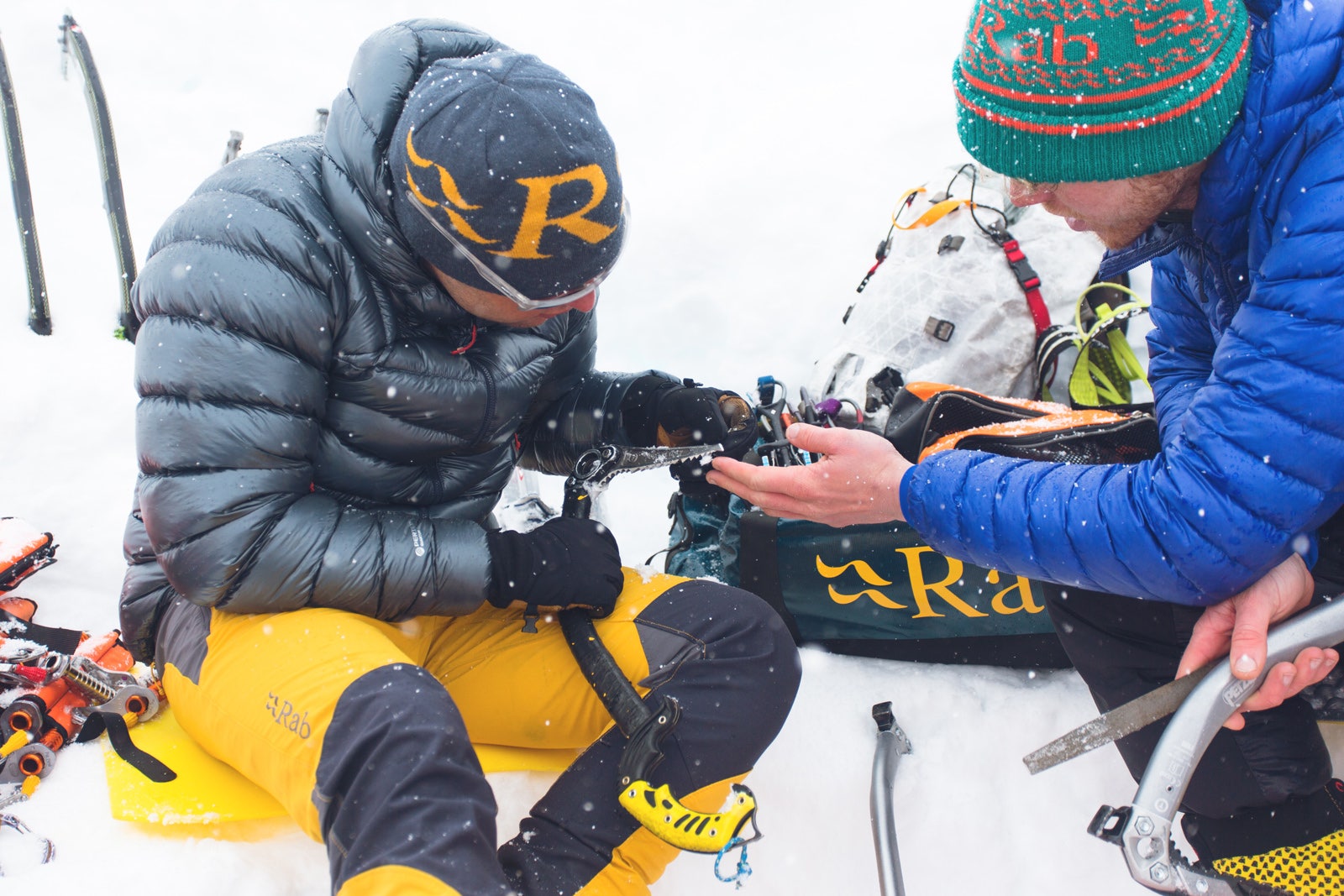

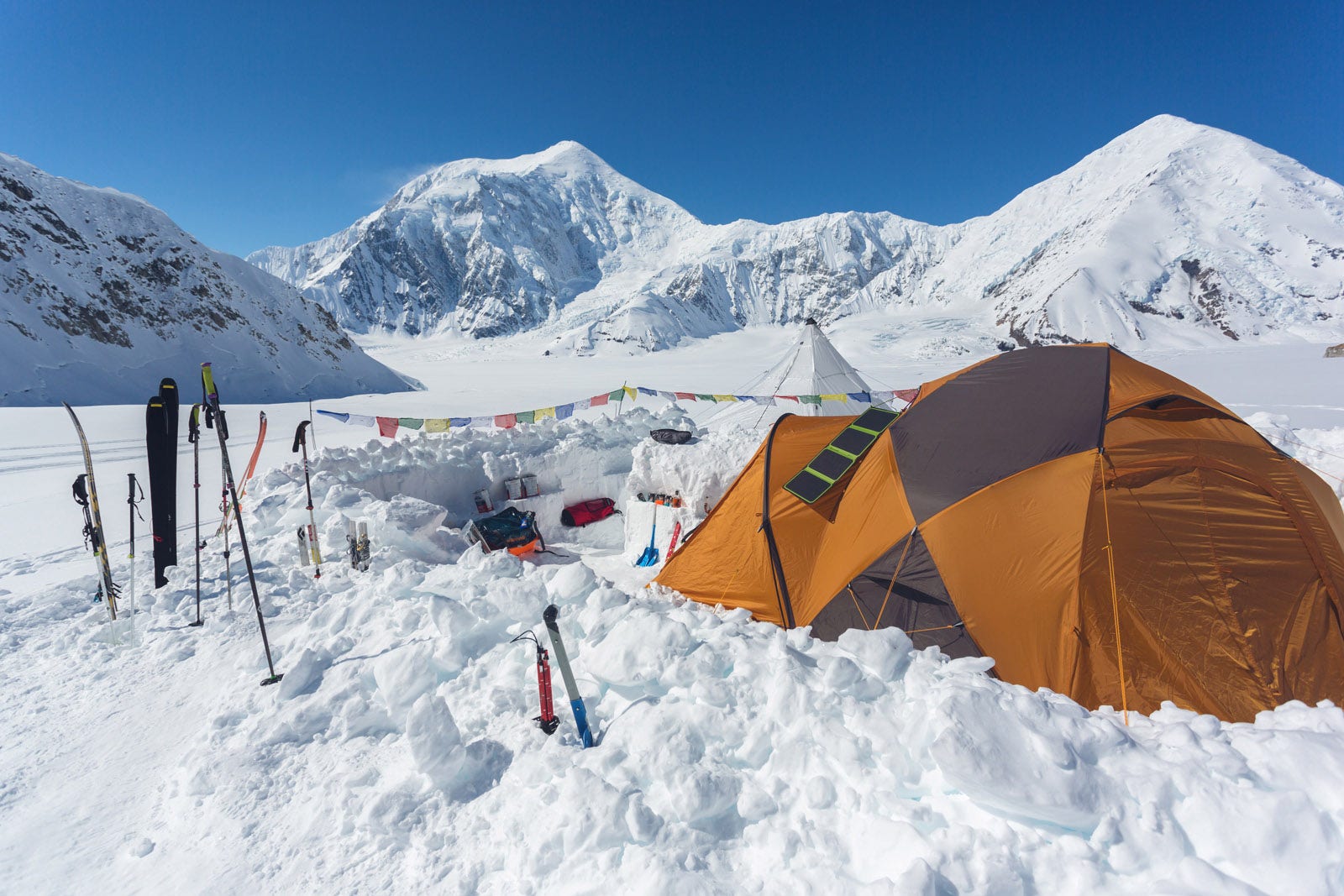

The guiding
The guiding was fantastic. With an extended knowledge of the ice around camp, each trip can be crafted to accommodate the client's desires, comfort levels, and physical abilities. For example, some ice climbers step out of the helicopter ready to climb hard and the day is spent sampling the steep ice of the moulins in the area. For others, the hope might be to try some ice climbing as well as explore beautiful ice features, for a trip like this we can often rappel into an area with a blue tunnel or cave that we'll then ice climb out of. The climbing on the Spencer Glacier is top-notch in the summer glacier climbing scene.
Our area is filled with relatively easy walking that leads to walls ranging from 60 to 90 degrees and we have a seemingly abundant number of overhanging lines inside our moulins. Some of these are truly a physical challenge and a large piece of my work is coaching my clients through these sections. They are always nervous and extremely stoked so it's quite rewarding to share the experience with them. One of the interesting parts of summer ice climbing is how fast ice screws melt out in the hot sun. For this reason, we use multiple v-threads to build our climbing anchors. By removing the metal screws from the equation, our anchors are stronger and time is not an issue.
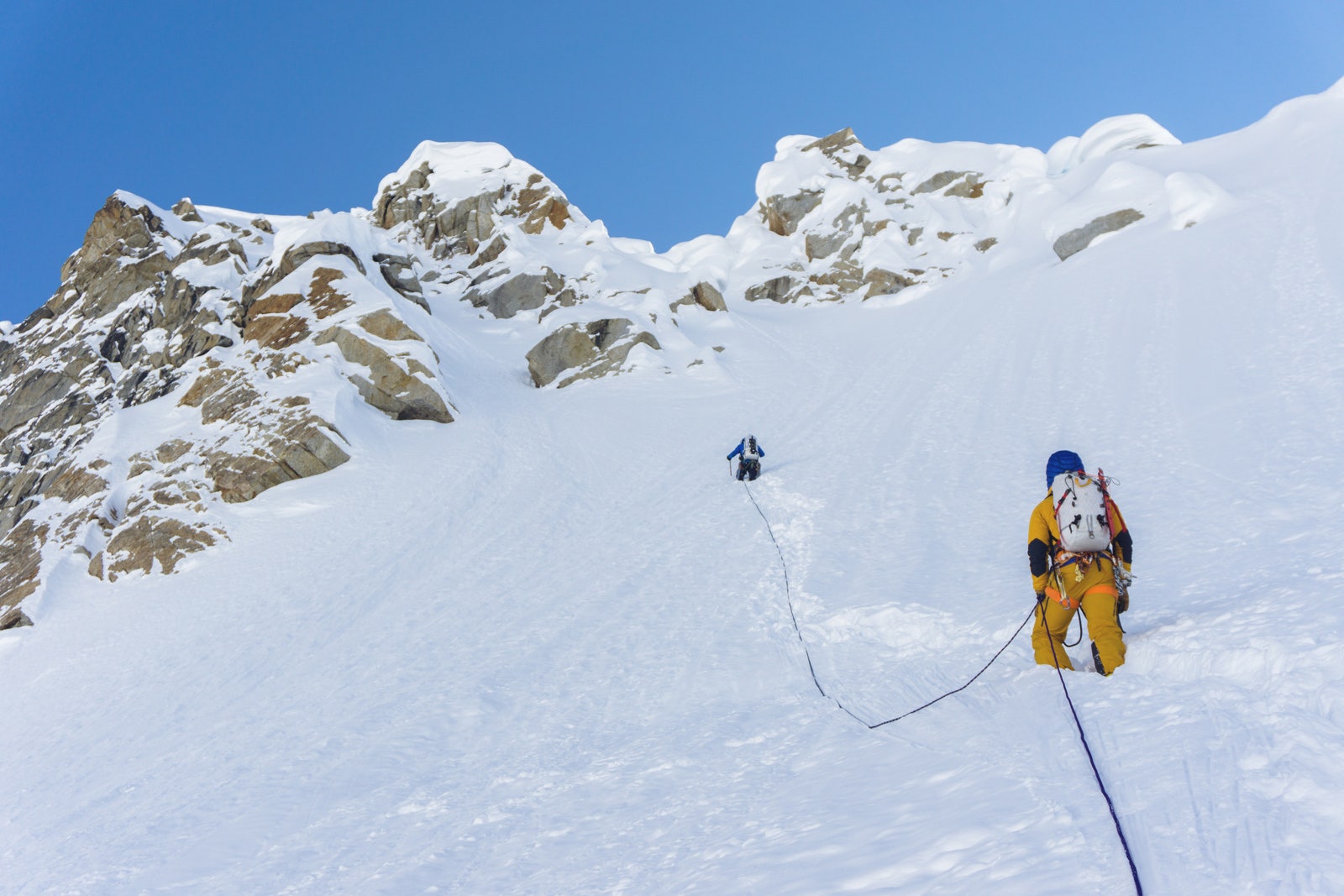

Outside of the technical work behind guiding, an important part of the job is educating clients. Most of them are visiting Alaska for a short time and have never been on or seen a glacier, so it’s important to inform them about what a glacier actually is, why it looks and acts the way it does, how the Glacier’s retreat is affecting it and it’s surrounding area, and of course plenty of information covering everything glaciers and climbing from Alaska to Antarctica. A glacier is a moving mass of ice formed by snow being compressed under its weight. The ice is sliding downhill because of the unfathomable weight of itself and it's constantly carving away at the rock surrounding it, our landscape in South Central Alaska is the outcome of powerful glaciers reshaping the land. While the glacier is carving the mountains, its also always being cracked and shaped by that same land it scrapes on. The features we climb in are shaped by the glacier’s general movement, the meltwater running through it, and the sun, understanding how climbing areas were formed can land itself useful in choosing favorable climbing. It is an ever-changing environment and thus a perfect classroom.
Of course, there were times when two guides would spend the night out in the ice world together. These were always memorable nights. Sharing the tent with another guide meant climbing hard. Pitches scouted throughout the week alone or during guiding can now be climbed as you have a belayer.. ah, what a relief! On these nights we'd spend hours and hours leading the stunning walls around the camp. My main partner for these was Stephen Staley. Together we explored new walls, moulins, caves, tunnels, and entire areas of the glacier. In June and July, it doesn't really get dark on the Spencer Glacier and we could climb without our headlamps even at two in the morning! These missions are some of my favorite of the year, the complex shapes of the glacier continually blow me away and a never-ending excitement to explore the blue ice makes climbing through the night a treat.
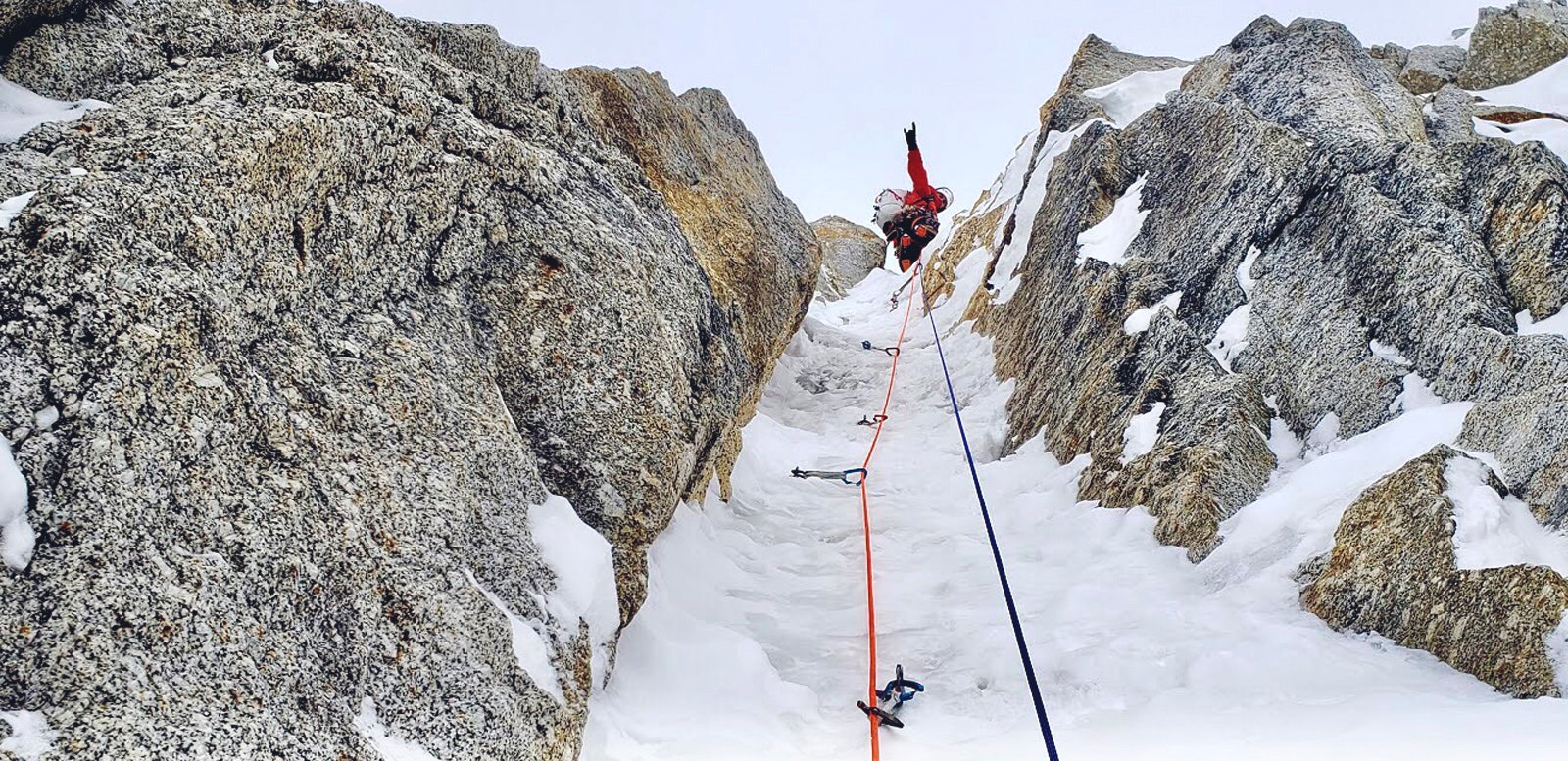

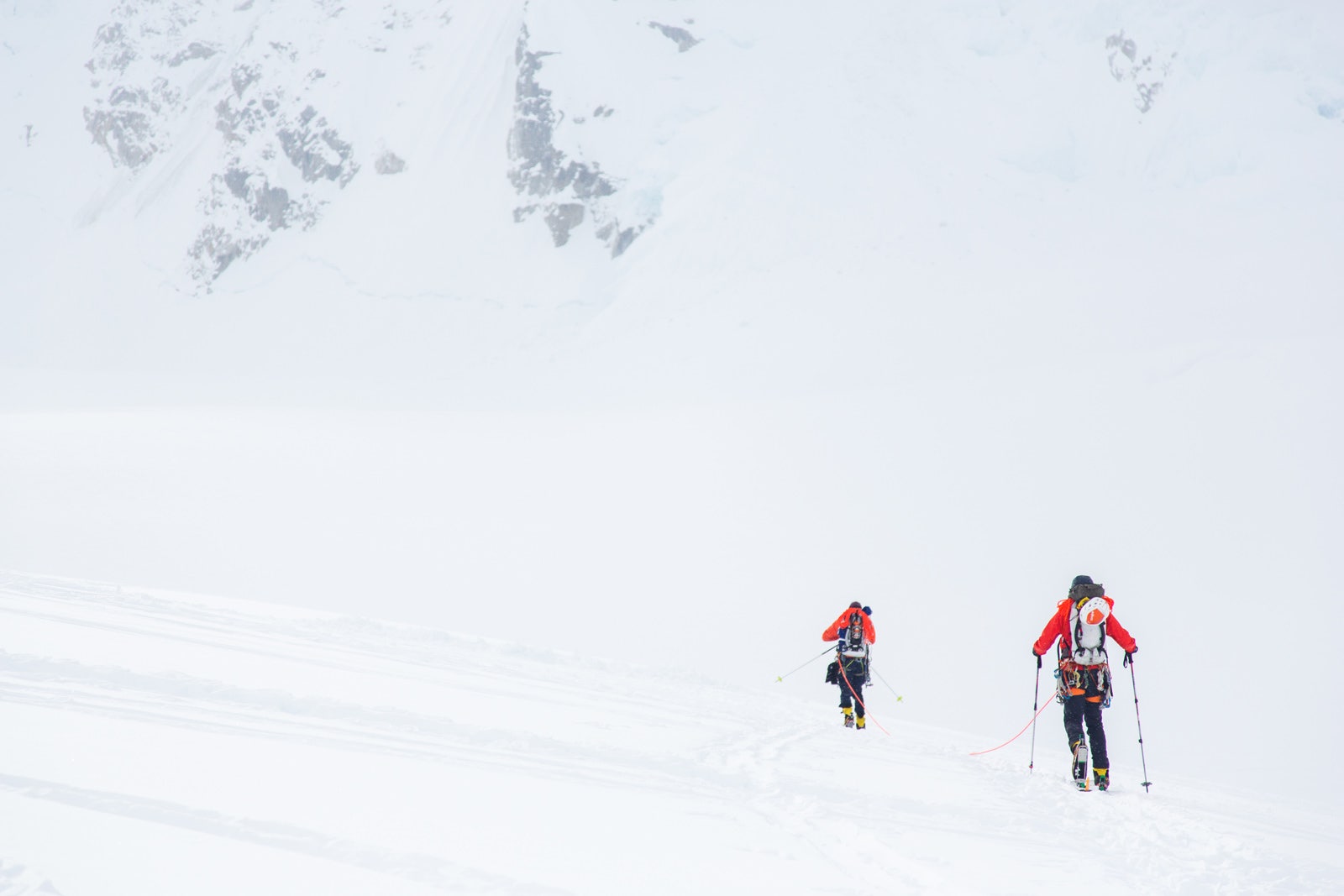

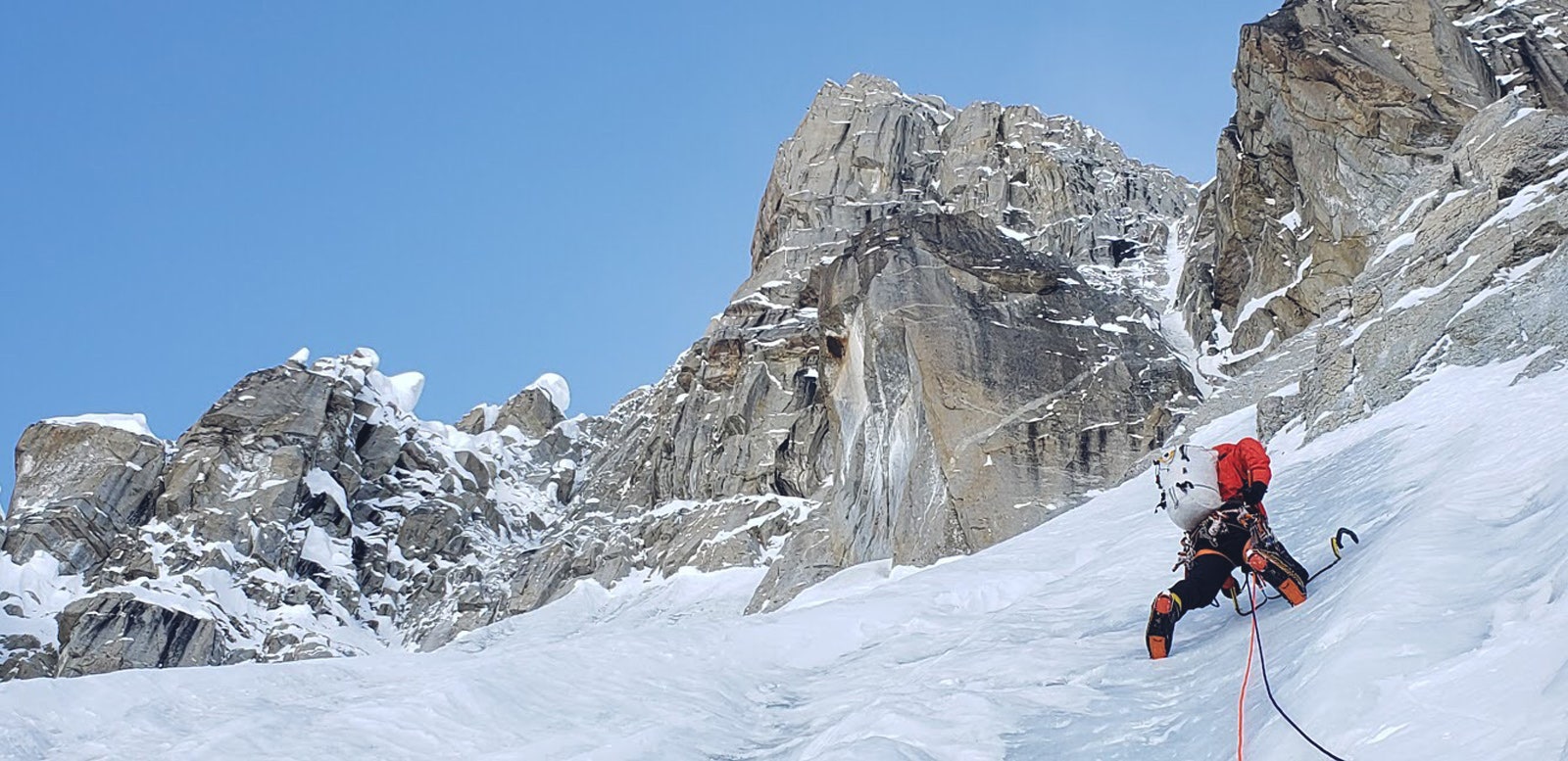

A climb of Carpathian Peak
In the spirit of adventure, I ended the season with Matt Wentzell by going on a climb of Carpathian Peak “the hard way.” This peak is quite proper despite its low elevation as it rises from the sea on two sides. It can be seen from the beautiful drive along Turnagain Arm and calls to climbers and skiers. It’s "back" side goes down to the Spencer/Blackstone Icefield. This mountain, though stunning and seemingly friendly, does not give in easy and climbing it is best done in the winter and spring when it's coated in thick snow- skis can be used to quickly move about the glaciers. And instead of climbing on the poor quality rock of the mountain, boot packing in the snow is done. However, we went at the end of the summer and the long way from our office at Spencer Glacier/Spencer Glacier. Because of this we snaked and weaved through hundreds of crevasses on bare glacial ice. For us it was about the adventure, we had no idea what it would be like but our combined years of hard ice glacier guiding worked to our advantage as we moved swift and efficiently up the entire glacier and because this place was our home- we knew we'd figure it out.
We slept high above the Icefield on the SE Ridge of the mountain in total wilderness. It was truly special to be there. We were able to learn about the upper area of the glacier which is not travelled in summer as well as go for an exploratory adventure in the Alaskan backcountry. We had an entire mountain arena to ourselves and we could even see the ocean below us at Blackstone Bay in Prince William Sound. We eventually bailed just below the summit due to a horrid gendarme made of stacked blocks. Making the long haul back to the Spencer Whistle Stop where the Alaska Railroad had first dropped us off, we got back at 12:30 AM the second night. Our 38-hour adventure, most of which was done in crampons on hard ice, totalled an estimated distance of over 50km and 2,200m of vertical gain and loss. That’s a lot of ice walking and I was utterly exhausted when I boarded the train back to town.
There are so many special parts of my work on the Spencer Glacier that make it a staple of my life. From sharing my world with my clients, to climbing at midnight with close friends, to living in icy solitude- this experience has held a lasting impression on what wilderness and adventure means. This season it became clear early on that the opportunity to live alone on a glacier was once in a lifetime and something most people on Earth will never experience. Stuffing as many memories as possible into my pockets, this is something I shall hold onto.
In a changing world, currently plagued by the environmental, societal and political problems revolving around climate change, I am so grateful to have spent the summer on one of Earth's most precious gifts: Glacial Ice.
Featured Kit List
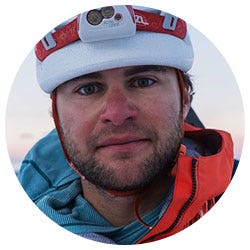

Words by | Benny Lieber

